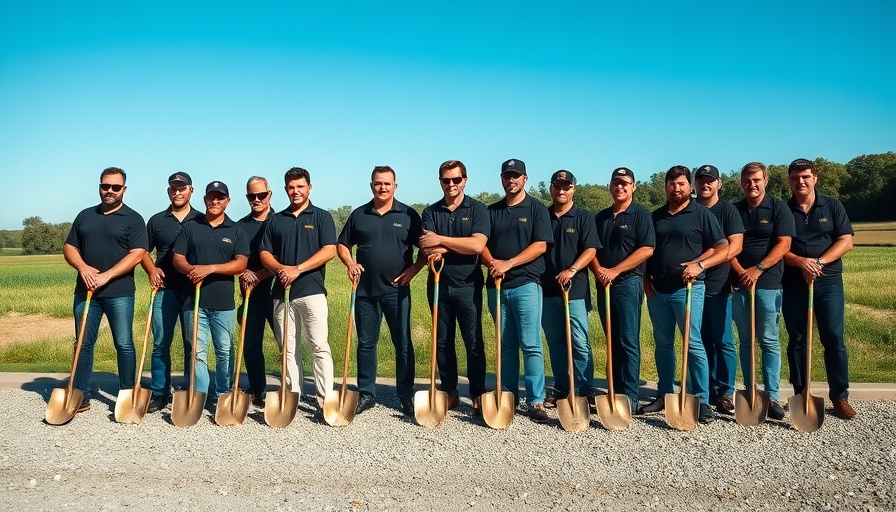
Transforming Agricultural Logistics on the Ohio River
Superior Ag, an Indiana-based cooperative, is setting a new standard for agricultural supply in the region with the launch of a state-of-the-art fertilizer terminal at the former Summit River Terminal site near Rockport. Today, they broke ground on this new facility, envisioned as a vital resource for farmers across southwestern Indiana, northern and central Kentucky, and even extending into parts of Illinois.
With a staggering investment exceeding $20 million, the terminal will house innovative features that promise to enhance agricultural logistics significantly. Richard Lloyd, president and CEO of Superior Ag, heralded this development as a major leap towards improved efficiency, stating, "Our construction marks a significant step forward in delivering efficient, high-capacity service to our farmers." The facility will cater to modern farming needs, where larger equipment requires faster and more reliable services.
A Modern Facility for Today’s Farmers
The terminal will boast 10 large bins for efficient fertilizer segregation, as well as impressive throughput capabilities. With a 600 tons per hour (TPH) barge receiver, it can unload a full barge in just about three hours. Additionally, the 300 TPH truck receiver ensures truck unloading takes a mere five minutes, enhancing overall operational efficiency.
This new facility is not just about speed; it's also about versatility and adaptation for farmers. The automatic treatment systems will allow for the integration of stabilizers and micronutrients, ensuring that the fertilizer distributed is both effective and tailored to farmers’ needs. It is estimated that the terminal will have the capacity to handle 30 to 35 barges annually, a robust figure that underscores its strategic importance to the local agricultural economy.
Job Creation and Economic Growth
Construction of the terminal is expected to take 12 to 18 months, with operations projected to commence by late 2026. Beyond its operational capabilities, the terminal will create jobs directly and indirectly, with initial staffing projections estimating six employees on-site and a potential 15 to 20 jobs in total once the facility is operational.
"We’re excited about the terminal’s location along the Highway 231 corridor, offering direct river access that significantly enhances our logistic capabilities," remarked PJ Peter, Agronomy Division Manager. This strategic placement is likely to attract even more agricultural businesses to the area, fostering an ecosystem of growth in the agricultural sector.
The Future of Farming: Meeting Growing Demands
As farmers today employ larger machinery, there's a pressing need for solutions that keep pace with their operational demands. The new facility at Superior Ag will provide an expansive inventory that meets these needs by ensuring quicker load times and better logistics management. This capability is vital for farmers looking to maximize efficiency amidst rising competition and an ever-changing agricultural landscape.
Commitment to Local Agriculture
With over 2,700 members, Superior Ag has a longstanding commitment to supporting local agriculture. This latest investment not only reflects their dedication to growth and innovation but also their understanding of the evolving needs of modern farmers. As they move forward with this ambitious project, they demonstrate a blueprint for how local cooperatives can adapt and thrive in an increasingly complex agricultural economy.
Conclusion: A Bright Future Ahead for Agriculture
The groundbreaking of Superior Ag’s new fertilizer terminal is more than a construction project; it symbolizes a renewed commitment to agricultural excellence and sustainability. As the facility prepares to launch operations, it promises to redefine agricultural logistics along the Ohio River and provide much-needed resources for farmers. This is a significant moment not just for Superior Ag, but for the entire agricultural community it serves, setting a precedent for future investments in agricultural infrastructure.
 Add Row
Add Row  Add
Add 




Write A Comment